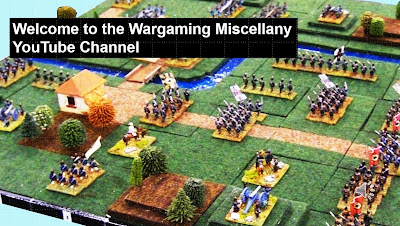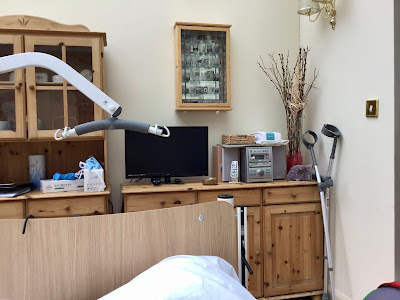After having read his book THE CRUEL SEA, I decided to read Nicholas Monsarrat’s last (and unfinished) two-volume work, THE MASTER MARINER.
The books tell the story of Matthew Lawe, an Elizabethan sailor who, as a result of cowardice in the face of the enemy, is condemned to live until ‘all the seas run dry’.
The first book is entitled THE MASTER MARINER: RUNNING PROUD, and begins with Matthew serving as Sir Francis Drake’s coxswain at the time of the Spanish Armada. Our hero serves on Drake’s flagship and is given command of the leading fire ship sent into the midst of the anchored Spanish fleet. He jumps overboard too early, and is cursed by one of injured sailors who remains aboard the fire ship.
Matthew is picked up by one of the Spanish galleons that escapes the attack by the fire ships, and he is subjected to ill treatment by the crew and the ship’s priest. He eventually escapes, just before the galleon explodes and sinks just outside Tobermory.
Matthew next serves aboard Henry Hudson’s Discovery during its voyage to find the Northwest Passage. He is involved in the mutiny that ended with Hudson and the loyal members of the crew being put into an open boat and set adrift to die. The mutineers return to England where they are arrested and put on trial … but left unpunished.
The action then moves to the Caribbean, where Matthew serves as a pirate under Henry Morgan and the French privateer, Simon Montbarre. Sickened by the barbarity he sees, Matthew final escapes and is advised to get as far away as possible. He takes passage on a small trading vessel that is returning to England and arrives in Portsmouth in time to witness the launch of a new yacht for King Charles II. As a result, he meets Samuel Pepys, and eventually becomes an Admiralty clerk during Pepys time as Chief Secretary to theAdmiralty.
Matthew loses his post after the Glorious Revolution in 1688 and then his hard-earned savings as a result of the speculation boom that arose on the back of the South Sea Bubble. After a period in the Fleet Prison for debt, he manages to get released in exchange for agreeing to serve for five years aboard a Portuguese fishing vessel that operates off Newfoundland’s Grand Banks.
At the end of the fishing season Matthew and several other crew members are left behind at St John’s Newfoundland, where they exist by trading with the local natives. One of his fellow sailors is viciously killed and when a new and tyrannical ‘Fishing Admiral’ takes control of St John’s, Matthew allows himself to be impressed by the Royal Navy to serve aboard HMS Pembroke.
As a result, he meets and eventually works for James Cook and takes part in the run up to the Battle of Quebec before accompanying Cook on his voyages of exploration. By the time of Cook’s death, Matthew had attained the rank of lieutenant in the Royal Navy, and after the return to the United Kingdom of Cook’s expedition, he is ‘put on the beach’.
After a period of inactivity, Matthew next serves as a general factotum for another beached officer, Horatio Nelson. Nelson was living in his family’s home in Norfolk, and Matthew fulfils all sorts of duties around the small estate. When Nelson is recalled to service, Matthew goes with him and takes part in all of Nelson’s victories as well as being a witness to Nelson’s obsession with Emma Hamilton. However, just before Nelson is shot on the deck of HMS Victory, Matthew sees the danger and hides … reinforcing his damnation for cowardice in the face of the enemy.
The second book - THE MASTER MARINER: DARKEN SHIP - was never finished, but certain parts were completed in draft and others in outline.
The first part deals with Matthew’s service as captain of a slave ship taking trade goods to West Africa, then a cargo of slaves to Barbados, and ending with bringing back to the United Kingdom the products of the Caribbean and the United States. This ends when the War of 1812 breaks out between the US and Britain, causing disruption of the cross-Atlantic trade.
1813 sees the unemployed Matthew being impressed into the Royal Navy as a gunner and taking part in the battle between the frigates Chesapeake and Shannon. This is followed by his service as a common sailor alongside Herman Melville on a clipper engaged in the China tea trade.
When that ends, Matthew joins the expedition to find out what happened to Sir John Franklin’s last expedition to discover the North-West Passage.
After this he becomes seaman and later a ‘supercargo’ on some of the earliest steam merchant ships. During his service he meets Samuel Plimsoll of Plimsoll Line fame, the merchant navy officer and later novelist Joseph Conrad, the leading Victorian novelist John Galsworthy, and the first solo round-the-world sailor Joshua Slocum.
The next part covers Matthew’s service during the First World War, during which he takes part in the Gallipoli Landings and the Battle of Jutland, serves aboard a Q-ship during the anti-submarine campaign in the Western Approaches, and takes part in the Zeebrugge Raid.
In the inter-war period Matthew takes part in a disastrous voyage to the West Indies after which he works as a shopkeeper, looking after a number of laid up merchant ships. When the Second World War breaks out, Matthew goes back to sea and takes part in the Malta convoys and the D-Day landings in Normandy.
Matthew finally finds salvation in the late 1970s when he is serving as a steward aboard the brand new liner Queen Elizabeth 2 - where he triggers serious industrial dispute - and then on a bulk oil carrier traversing the new St Lawrence Seaway. During a run ashore he meets a young woman who sings the words of Burn’s A RED RED ROSE, which includes the words ‘all the seas run dry’. On returning to his ship, he finds that during de-oiling a hose has leaked and the oil has spread across the deck and caught fire. To stop this fire spreading, a door has to be closed, and Matthew dashes through the flames and shuts it. He is badly burned, and dies … but his aging dead body suddenly regains the look of a twenty-two or twenty-three-year-old, the age he was when he committed the act of cowardice that had originally condemned him to a semi-eternal life.
It is a pity that Monsarrat never finished the second book but had he, this pair of novels would have been an excellent telling of Britain’s naval history from the Elizabeth I to Elizabeth II.































































